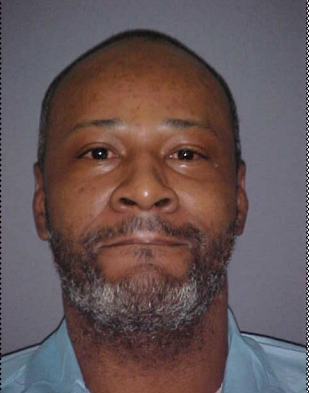After a six-year pause, Oklahoma carried out its third consecutive botched execution Thursday, causing 60-year-old John Marion Grant to vomit, convulse and curse as he was killed with a lethal injection of three drugs.
Grant was killed with the same three-drug combination that was used in the infamous 2014 execution of Clayton Lockett, who writhed in pain and whose killing took 43 minutes. Lockett’s execution was followed by that of Charles Warner in 2015, who cried out that his body was on “fire” after being injected with the drugs. Richard Glossip was scheduled to die later that year, but then-Gov. Mary Fallin (R) called off the execution at the last minute because the corrections department had the wrong combination of drugs. Warner’s autopsy report later revealed that he, too, had been executed with the wrong drugs.
Sean Murphy, an Associated Press reporter who witnessed Grant’s execution, said he convulsed about two dozen times after the injection of the first of three drugs, midazolam, and began to vomit. The vomit covered his face and ran down his neck and the side of his face, Murphy said. Murphy, who has observed 14 executions, said this was the first time he had seen an individual vomit during an execution.
“Based on the reporting of the eyewitnesses to the execution, for the third time in a row, Oklahoma’s execution protocol did not work as it was designed to,” Dale Baich, a lawyer for a group of people on death row who are challenging Oklahoma’s execution protocol, said in a statement. “This is why the Tenth Circuit [Court of Appeals] stayed John Grant’s execution and this is why the U.S. Supreme Court should not have lifted the stay. There should be no more executions in Oklahoma until we go trial in February to address the state’s problematic lethal injection protocol.”

Before he was killed, Grant was a plaintiff to the litigation that Baich referenced. In August, U.S. District Judge Stephen Friot ruled the case could proceed to trial but dismissed six plaintiffs, including Grant, over a legal technicality. At the time, Friot suggested that the deaths of these dismissed plaintiffs could be used as evidence for the upcoming trial into whether Oklahoma’s lethal injection protocol violates Eighth Amendment protections against cruel and unusual punishment.
Grant “became a human experiment for the other death-row prisoners’ challenge to Oklahoma execution process,” Robert Dunham, the executive director of the Death Penalty Information Center, said in a statement Thursday. “Oklahoma had botched its last three execution attempts before its six-year execution pause, but apparently learned nothing from that experience. But to say this is another botched Oklahoma execution would be inadequate. Oklahoma knew full well that this was well within the realm of possible outcomes in a midazolam execution. It didn’t care … and the Supreme Court apparently didn’t either.”
Grant suffered extreme neglect and abuse as a child. He “took full responsibility” for the 1998 killing of Gay Carter, a woman who worked at the prison he was incarcerated in, and “spent his years on death row trying to understand and atone for his actions, more than any other client I have worked with,” Sarah Jernigan, Grant’s lawyer, said in a statement after his death.
In her statement, Jernigan outlined the ways the state had failed Grant throughout his life. “When John stole to feed and clothe himself and his siblings, Oklahoma labeled him a delinquent instead of a desperate and traumatized child left to fend for himself. John wasn’t even a teenager yet when Oklahoma sent him to the first of several state-run youth detention facilities,” where he experienced abuse so painful he couldn’t talk about it, Jernigan said.
“Oklahoma ultimately dumped John on the streets with no skills and no support for the mental illness that was exacerbated by years of being both the victim of and witness to beatings, rapes, and extended periods in solitary confinement, amongst other abuses. When he committed a robbery at age seventeen, Oklahoma sent him to an adult prison, subjecting him to further victimization, as later documented in a class-action lawsuit,” Jernigan added.
“Through all of this, John never received the mental health care he needed or deserved in prison. And when he eventually committed a violent crime, the murder of a prison worker, Oklahoma provided him with incompetent lawyers who had no business handling a case with the ultimate punishment at stake.”
Grant was the first person to be executed in Oklahoma since 2015, when the state paused executions after a series of high-profile screw-ups. Last year, the state announced a new, supposedly safer execution protocol. But it was nearly identical to the old protocol: Both call for midazolam as a sedative, vecuronium bromide as a paralytic and potassium chloride to stop the heart.
That Grant was executed on Thursday came down to a grim legal technicality.
During a May 2020 hearing on the lethal injection protocol lawsuit, Friot stated that he had received assurances from then-Attorney General Mike Hunter that the state would not seek executions while the litigation was ongoing. In August, Friot ruled that the case could proceed to trial — but he dismissed six plaintiffs from the suit, including Grant.
Friot claimed the six individuals had failed to offer a reasonable alternative to Oklahoma’s lethal injection protocol, something the U.S. Supreme Court had ruled is necessary in these kinds of legal challenges. In fact, all of the plaintiffs, including Grant, had signed a court filing that included four alternative methods of execution. Friot instructed the plaintiffs to affirmatively indicate their preferences, which six of the plaintiffs declined to do, mostly citing religious or moral objections to facilitating their own deaths. One later said he did not intend to decline to specify an alternative.

Friot appeared to welcome the idea that the six dismissed plaintiffs could serve as human test subjects to help determine whether Oklahoma’s lethal injection protocol is unconstitutionally cruel. “Because ... six of the plaintiffs in the case at bar have declined to proffer an alternative method of execution, there may well be a track record ... of the new Oklahoma protocol by the time this case is called for trial as to the other twenty-six plaintiffs,” the judge wrote in a footnote in a court filing.
Oklahoma Attorney General John O’Connor, who replaced Hunter in July, took advantage of Friot’s move and quickly scheduled executions for the six men, plus a seventh who is not part of the litigation. The six plaintiffs have since been reinstated to the litigation, but the state has pushed forward with the executions in violation of its promise last year. Julius Jones, who has a credible innocence claim, is the next person scheduled to be executed in Oklahoma, on Nov. 18.
On Wednesday, an appellate court granted a stay for Grant and Jones, finding there was “nothing in the relevant case law that specifically requires a prisoner to designate a method of execution to be used in his case by ‘checking a box’ when the prisoner has already identified in his complaint the very same alternative methods given as choices on the form.” But in a partisan decision, the U.S. Supreme Court vacated both stays on Thursday, allowing Grant’s execution to proceed.
The Supreme Court did not publish an explanation of its decision.
Days before Grant was killed, his lawyers asked Friot to order the omission of the paralytic drug from his injection in order to preserve evidence of “the physical manifestation of pain and suffering” during the execution. The judge, who previously removed Grant from the litigation for failing to specify how he wanted to die, denied the request.
